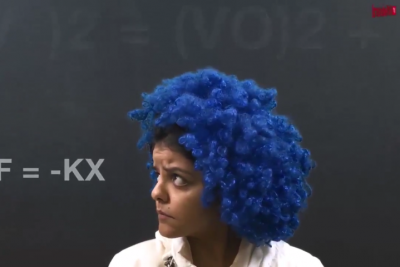



The watering can that loves to shower.
“Everybody, drink wine out of the bottle!”
When you don’t want your friend to finish your food, just hand this over.
Erm… use it as a stand for your incense sticks?
“But… But… Peep-toe is in fashion!”
It’s appalling, but there are more examples like these. And when the consumer sees such products, they despise the company for their lack of sensitivity and logic. Much like what Dilbert says here.Take our Market Research CourseIn 2007, Cartoon Network set up LED signs in various places throughout cities to promote one of their cartoons. A resident in Boston (America), however, thought the devices were bombs and called 911. This harmless promotion of a cartoon character turned into a terrorism scare, resulting in the shutdown of many public transportation lines. (Source: Hubspot) There are ample examples of market research propelling brands to success. Although Samsung’s cart might slowly be blowing up in the mobile phone segment, it wasn’t too long ago when their understanding of consumer helped them create a blockbuster product. Using price and performance indicators, Samsung’s engineers built products based on the brief. Until… Samsung’s team noticed that business people in Korea and Japan had a habit of taking notes in pocket-sized notebooks. This led to a product idea — a “smart diary” complete with a pen (the stylus). It was larger than Samsung’s existing smartphone, smaller than its tablet – the size of a perfect notebook. And they made it pleasant for writing. The research eventually led to the highly successful Galaxy Note series. You’ll know that a product is backed by strong market research when it solves or at least alleviates problems. For instance, you know the pains of paying for extra baggage after spending on shopping. Think of the many times you’ve gone batshit, obsessing over your luggage if the conveyer belt doesn’t carry it within the first 2 minutes. You’d probably want to sit on the belt and go backstage to see what’s up! Introducing Bluesmart Suitcase - the genius suitcase equipped with GPS to help find it if it goes missing. A built-in digital scale weighs bags so you know how much to stuff in and a battery lets users charge devices. The users can lock their baggage with a digital lock controlled by their smartphones. You might still need to tie ribbons on the handle to distinguish your suitcase from the rest, but all in all, it’s perfect. Market research is important to keep the product relevant. The selfie stick is an inexpensive and easy way to take solo pictures. They were designed at a time when ‘Selfie’ was so popular that it became Oxford Dictionary’s word of the year. The product rode on existing human behaviour and made the action of taking your own pic easier to execute. Steve Jobs infamously dissed market research. He said, ““Some people say, ‘Give customers what they want.’ But that’s not my approach. Our job is to figure out what they’re going to want before they do. I think Henry Ford once said, ‘If I’d asked customers what they wanted, they would have told me, “A faster horse!”‘ People don’t know what they want until you show it to them. That’s why I never rely on market research. Our task is to read things that are not yet on the page.” Seems like very few people paid attention to the last line. Bob Gilbreath, Co-Founder & CEO at Ahalogy being one of them. In his illuminating LinkedIn post, he explains what Jobs actually meant when he said those words. “One should never conduct a research study that asks people what they want, yet it is a mistake that big and small companies make every day. …you’ve got to “show them” what you have come up with and use their reactions to guide you. Apple has a massive team of user experience people who use customer input and testing to improve their products.
Take our Market Research CourseSide note: Here’s proof.